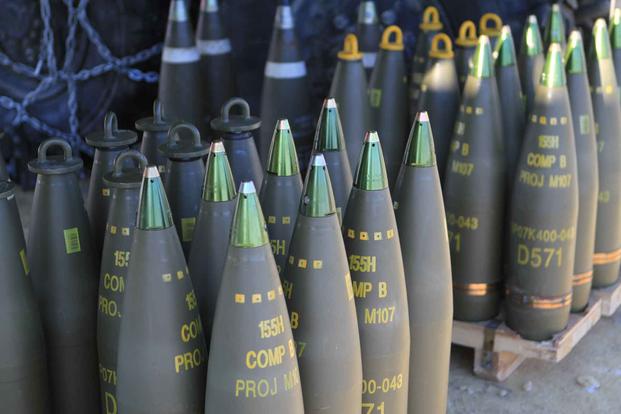The Pentagon is moving to dramatically increase production of its most lethal ammunition as the war in Ukraine has taken a toll on the military's inventory and as concerns mount about whether it has enough bullets and bombs for a showdown with China or Russia.
"We've got a ways to go to make sure our stockpiles are prepared against the real contingencies," Gen. Mark Milley, the top general for the U.S. military, told lawmakers at a Capitol Hill hearing Wednesday. "The big lesson learned from Ukraine is the incredible consumption rates of conventional munitions in what is a limited regional war."
Right now, the Army produces about 20,000 155mm artillery rounds per month. That's a significant boost from 14,000 produced throughout the bulk of the Global War on Terrorism era. Yet the service is aiming to produce 75,000 rounds per month, or 900,000 a year, by 2025, Army Secretary Christine Wormuth told lawmakers Tuesday.
Read Next: Army Ditches New Ads After Jonathan Majors' Arrest But Plans to Film Replacements
Most of the 155mm rounds produced per year are used for training, while maintaining ammunition stockpiles in reserve for war. Wormuth said the service is also looking to expand the production of guided multiple launch rocket systems (GMLRS), long-range missiles that have been key in the war in Ukraine. In the coming years, the Army wants to more than double that production from 6,000 rockets per year now to 15,000.
Wormuth and Gen. James McConville, the Army's top officer, said that substantial support for the war in Ukraine, as the U.S. effectively serves as the main weapons and ammo supplier to the Ukrainian military, has not impacted American training. But it's unclear how much stockpiles have been depleted. Other services, such as the Navy, have raised the alarm over dwindling ammunition.
"If the conflict does go on for another six months or another year, it certainly continues to stress the supply chain in ways that are challenging," Navy Secretary Carlos Del Toro told reporters in January.
But beyond support for Ukraine, military planners are also aiming to shift the U.S. military's training and doctrine focus away from the relatively small-scale engagements in Iraq, Afghanistan and Africa to large-scale battles the U.S. has not seen since the mid-20th century.
The U.S. did not frequently use massive artillery barrages against the Taliban, Islamic State or other insurgent groups it has waged war with since 9/11. Those groups often fought U.S. troops in small-scale firefights and generally did not aim to hold clearly defined territory, have armored vehicles or distinct headquarters, the type of assets that would require the deployment of explosive munitions by American forces.
Most use of heavy munitions during those conflicts involved precise missile strikes from drones, or limited artillery or mortar strikes in the mountains of Afghanistan against a handful of enemy combatants.
"That was very much sufficient for operations in Iraq and Afghanistan and training the force," McConville told lawmakers Tuesday, referring to the current production of artillery rounds. "Now, we're seeing for a good-sized regional war, what it requires for ammunition stocks."
Meanwhile, Ukraine is using upward of 4,000 artillery shells a day, according to reporting from The New York Times, as it desperately clings to key territory against waves of soldiers and armored vehicles sent by Russian President Vladimir Putin. With Ukrainian forces outnumbered by the Russian military, constant vollies of heavy munitions are a critical component of Kyiv's defenses.
But even that war is relatively limited in scope to one small country, Milley noted to lawmakers. Pentagon planners anticipate any conflict with China or Russia would be a fight that could consume multiple countries.
"If there was a war on the Korean peninsula or a great power war between [the] United States and Russia, [the] United States and China, those consumption rates would be off the charts," Milley said.
-- Steve Beynon can be reached at Steve.Beynon@military.com. Follow him on Twitter @StevenBeynon.
Related: US Military Offers First Glimpse of Training for Ukrainian Troops in America











